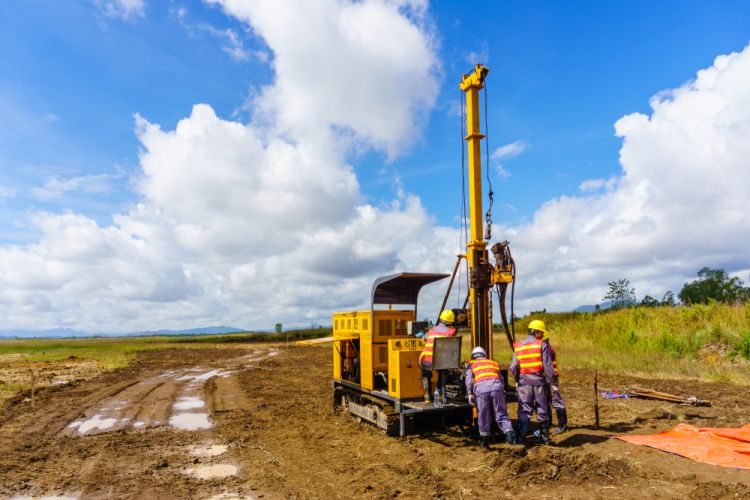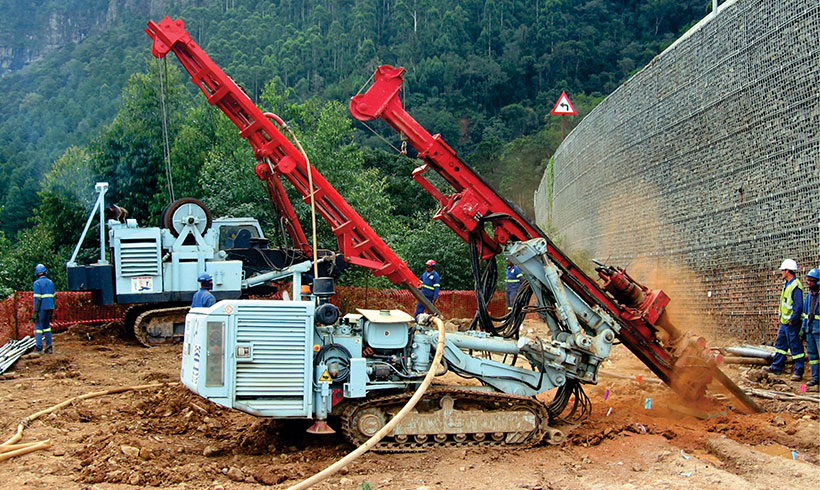Not known Factual Statements About Geotechnical Engineering For Construction Projects
All About Geotechnical Engineering For Construction Projects
Table of ContentsThe Basic Principles Of Geotechnical Engineering For Construction Projects Some Ideas on Geotechnical Engineering For Construction Projects You Need To KnowThe Best Guide To Geotechnical Engineering For Construction ProjectsThe Buzz on Geotechnical Engineering For Construction ProjectsThe Ultimate Guide To Geotechnical Engineering For Construction ProjectsUnknown Facts About Geotechnical Engineering For Construction ProjectsSome Known Questions About Geotechnical Engineering For Construction Projects.
Principles and Technique of Ground Enhancement. Ground Improvement Concepts And Applications In Asia. Layout analysis in rock auto mechanics.Cengage Knowing, Stamford, 666 p. Atkinson, J., 2007. The technicians of dirts and foundations. The Observational Technique in ground engineering principles and applications.
Unknown Facts About Geotechnical Engineering For Construction Projects
Lab and area testing plays a critical duty in this process. By removing samples from the earth's subsurface and applying a collection of examinations, geotechnical engineers can anticipate the behaviour of soil layers and examine their viability for various construction endeavours. The essence of geotechnical design in civil design can not be overemphasized, attributable to numerous elements: The preliminary step in any type of geotechnical research involves figuring out the soil kind at the construction site.
Understanding these attributes makes sure that just suitable soil types are picked for the growth, thereby avoiding potential structural failures. The foundation works as the bedrock of any kind of construction task. Selecting the proper structure type is a choice that rests on the detailed evaluation given by geotechnical design. This makes certain the longevity and security of structures by fitting the lots they will certainly bear.

Geotechnical website investigation is an important action in the preparation and execution of any kind of building and construction job. It includes the collection and evaluation of information related to the physical residential or commercial properties of soil and rock under a recommended building and construction website. This details is important for the layout and building and construction of safe, steady, and sustainable structures.
Not known Facts About Geotechnical Engineering For Construction Projects
, also recognized as subsurface expedition, includes a collection of activities intended at establishing the dirt, rock, and groundwater conditions at a building site. The primary goals are to recognize potential geotechnical threats, assess the design buildings of subsurface materials, and provide recommendations for the design and building and construction of structures, retaining wall surfaces, and other structures.
The workdesk research study aids in recognizing possible geotechnical issues and preparing the succeeding fieldwork. This involves observing the topography, drain patterns, existing structures, plant life, and any type of indicators of instability or erosion.
10 Simple Techniques For Geotechnical Engineering For Construction Projects
Shallow examination pits are dug deep into to straight observe and example the dirt and rock. This approach is beneficial for studying the upper layers of the subsurface and identifying near-surface threats. Non-invasive geophysical techniques, such as seismic refraction, ground-penetrating radar (GPR), and electric resistivity tomography (ERT), are used to map subsurface conditions and find abnormalities.
Dirt and rock samples gathered during the field investigation are subjected to research laboratory testing to establish their physical and mechanical properties. These examinations give essential information for geotechnical analysis and style.
The primary benefit of geotechnical site investigation is guaranteeing the safety and stability of frameworks. By understanding the subsurface conditions, designers can create structures and other structural elements that can stand up to the loads and environmental pressures they will certainly be subjected to. This lessens the risk of settlement, subsidence, and structural failure.
Geotechnical Engineering For Construction Projects - The Facts
This ensures effective and secure building methods. Geotechnical website examinations are commonly needed by developing codes and laws.
This info is indispensable for job supervisors, engineers, and service providers in developing reasonable schedules, budgets, and contingency strategies. Geotechnical Engineering for Construction Projects. High-Rise Structure in a Coastal AreaIn a coastal city, a high-rise residential structure was planned on a site with believed loosened sand deposits and a high water table. A thorough geotechnical investigation, consisting of borehole boring, CPT, and geophysical studies, was conducted
Some Known Facts About Geotechnical Engineering For Construction Projects.
Based on these searchings for, the structure design was modified to consist of deep heap foundations prolonging right into stable strata, and ground improvement techniques, such as vibro-compaction, were carried out to reduce liquefaction risks. This proactive approach made certain the safety and stability of the building while staying clear of expensive post-construction removal. Framework Advancement on a Sloping TerrainA major facilities project, entailing the construction of a highway and bridges, was intended on a hilly terrain with high inclines.

The Leaning Tower of Pisa (Italy), a renowned architectural marvel, is notorious for its unplanned tilt from considerable geotechnical issues. The tower's foundation was improperly made to deal with the soft, unstable soil under it, bring about irregular negotiation and its distinct lean. Our world is populated with excellent infrastructure projectsfrom towering high-rises to sprawling bridgesall standing testament to the advancement of the various construction equipment and approaches offered.
Geotechnical design is a specific field within civil engineering that focuses on researching the actions of planet materials. This branch digs deep right into the groundinvestigating just how the dirt, rock, and groundwater at a building site can influenceand be influenced bythe facilities that we erect on and into them. Prior to a solitary block is laid or a concrete foundation poured, geotechnical engineers probe into the earthgathering important data regarding the website's dirt composition, rock structure, and groundwater levels.
The Facts About Geotechnical Engineering For Construction Projects Uncovered

is a tool used to assess the honesty and load-bearing ability of stacks throughout installment, leveraging the concept of wave proliferation. It enhances construction effectiveness by offering real-time assessments, therefore guaranteeing risk-free and efficient stack structures. Among the sensible applications of geotechnical design involves determining and implementing the appropriate approaches for structure building.
Pile driving stands for more than the mere act of placing structural aspects right into the ground. On the contrary, it is a carefully coordinated process of transferring a framework's lots past the much less secure soil layers official site more detailed to the surfacedown to the a lot more significant strata that lie below. When it comes to pile driving, think about just how geotechnical designers expertly use this strategy to uniformly distribute the structure's weight.